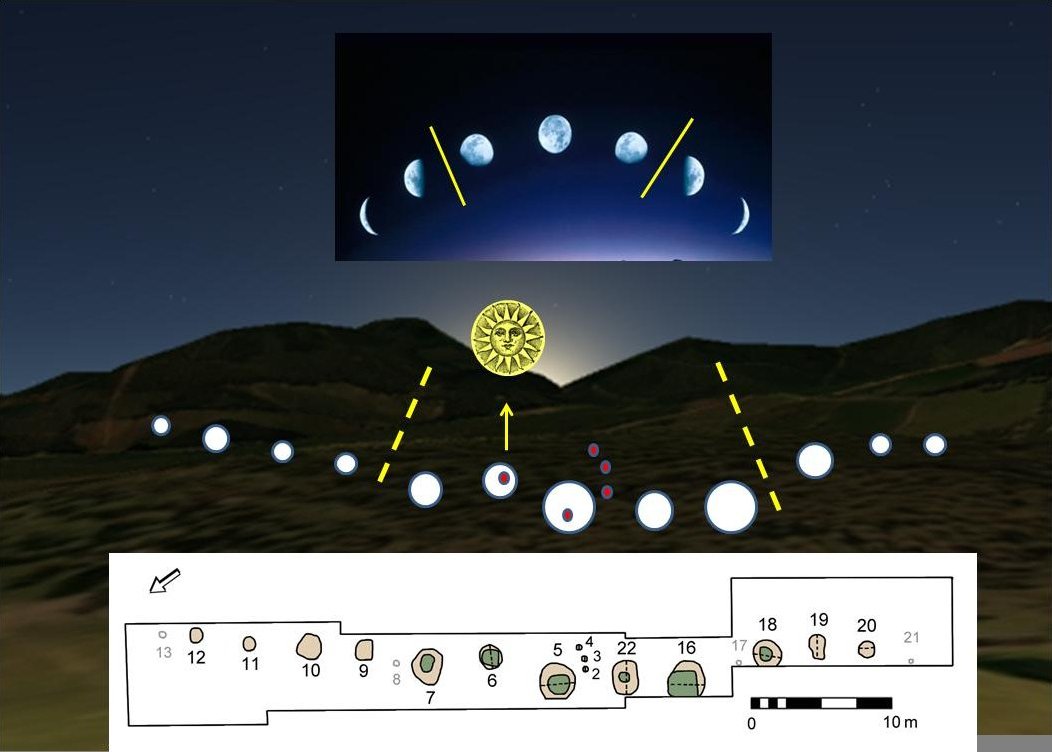Warren Field on:
[Wikipedia]
[Google]
[Amazon]
Warren Field is the location of a 
mesolithic
The Mesolithic ( Greek: μέσος, ''mesos'' 'middle' + λίθος, ''lithos'' 'stone') or Middle Stone Age is the Old World archaeological period between the Upper Paleolithic and the Neolithic. The term Epipaleolithic is often used synonymo ...
calendar monument built about 8,000 BCE.
It includes 12 pits believed to correlate with phases of the Moon
Concerning the lunar month of ~29.53 days as viewed from Earth, the lunar phase or Moon phase is the shape of the Moon's directly sunlit portion, which can be expressed quantitatively using areas or angles, or described qualitatively using the t ...
and used as a lunar calendar
A lunar calendar is a calendar based on the monthly cycles of the Moon's phases ( synodic months, lunations), in contrast to solar calendars, whose annual cycles are based only directly on the solar year. The most commonly used calendar, t ...
. It is considered to be the oldest lunar calendar yet found. It is near Crathes Castle
Crathes Castle (pronounced ) is a 16th-century castle near Banchory in the Aberdeenshire region of Scotland. It is in the historic county of Kincardineshire. This harled castle was built by the Burnetts of Leys and was held in that family for ...
, in the Aberdeenshire region of Scotland
Scotland (, ) is a Countries of the United Kingdom, country that is part of the United Kingdom. Covering the northern third of the island of Great Britain, mainland Scotland has a Anglo-Scottish border, border with England to the southeast ...
, in the United Kingdom
The United Kingdom of Great Britain and Northern Ireland, commonly known as the United Kingdom (UK) or Britain, is a country in Europe, off the north-western coast of the European mainland, continental mainland. It comprises England, Scotlan ...
. It was originally discovered from the air as anomalous terrain by the Royal Commission on the Ancient and Historical Monuments of Scotland. It was first excavated in 2004.
The pits align on the south east horizon and a prominent topographic point associated with sunrise on the midwinter solstice
The winter solstice, also called the hibernal solstice, occurs when either of Earth's poles reaches its maximum tilt away from the Sun. This happens twice yearly, once in each hemisphere ( Northern and Southern). For that hemisphere, the winte ...
(thus providing an annual astronomical correction concerning the passage of time as indicated by the Moon, the asynchronous solar year
A tropical year or solar year (or tropical period) is the time that the Sun takes to return to the same position in the sky of a celestial body of the Solar System such as the Earth, completing a full cycle of seasons; for example, the time f ...
and the associated seasons). The Aberdeenshire time reckoner predates the Mesopotamian calendars by nearly 5,000 years. It was also interpreted as a seasonal calendar because the local prehistoric communities, which relied on hunting migrating animals needed to carefully note the seasons to be prepared for a particular food source. The Warren Field site is particularly significant for its very early date and the fact that it was created by hunter-gatherer peoples, rather than sedentary farmers usually associated with monument building.

See also
*Prehistoric Scotland
Archaeology and geology continue to reveal the secrets of prehistoric Scotland, uncovering a complex past before the Romans brought Scotland into the scope of recorded history. Successive human cultures tended to be spread across Europe or furt ...
* Prehistoric Britain
Several species of humans have intermittently occupied Great Britain for almost a million years. The earliest evidence of human occupation around 900,000 years ago is at Happisburgh on the Norfolk coast, with stone tools and footprints prob ...
* Neolithic British Isles
* Göbekli Tepe
Göbekli Tepe (, "Potbelly Hill"; known as ''Girê Mirazan'' or ''Xirabreşkê'' in Kurdish) is a Neolithic archaeological site in the Southeastern Anatolia Region of Turkey. Dated to the Pre-Pottery Neolithic, between 9500 and 8000 BCE, the ...
* Callanish Stones
The Callanish Stones (or "Callanish I": gd, Clachan Chalanais or ) are an arrangement of standing stones placed in a cruciform pattern with a central stone circle. They were erected in the late Neolithic era, and were a focus for ritual activi ...
* Stonehenge
References
Stone Age sites in Scotland Archaeological sites in Aberdeenshire {{Scotland-stub